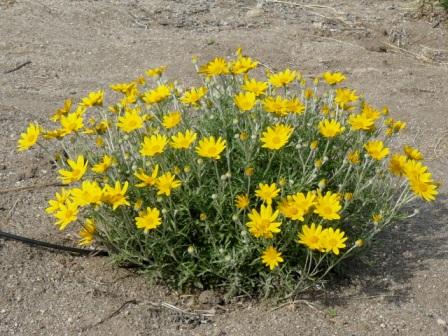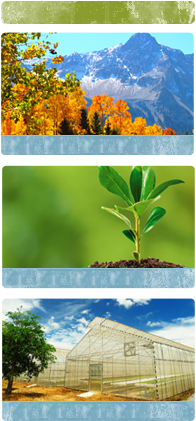Eriophyllum lanatum in the Landscape

Diane Jones, Draggin' Wing Farm, Water-thrifty Plants for Idaho
Scientfic Name: Eriophyllum lanatumCommon Name: Woolly Sunflower, Oregon Sunshine
Description: Mounds of attractive gray-green leaves are covered with a profusion of cheery yellow daisy-like flowers in late spring or early summer. This is a widespread, complex species with numerous recognized varieties that can range in height from a few inches to 2 feet. Very tough and adaptable.
Native Habitat: From British Columbia south into California and East to Montana, Idaho and Utah. In the Intermountain West, Wooly Sunflower occurs from low-elevation sagebrush flats to forests and exposed ridges above timberline.
Cultural Requirement
Soil: Well-drained, nutrient-poor or ordinary garden soil.
Moisture Tolerance: Intermountain varieties are extremely drought tolerant, but also do well with supplemental water in the xeric garden.
Sun/Shade/Preference: Full sun.
Transplanting: Easy.
Propagation: Seed.
Maintenance (pruning, fertilization, deadheading, division, irrigation, etc): For best appearance, deadhead in summer after blooming. Needs little or no fertilization.
Insect, disease, or other problems: None of concern.
Landscape Value
Use in the Landscape: Provides a spectacular burst of color in late spring or early summer lasting two to three weeks, depending on weather. Mounds of gray-green foliage are attractive when the plant is not in bloom.
Foliage: Longish, narrow leaves are covered with tiny hairs, giving them a gray-green appearance. Leaves can be entire or pinnate.
Flower: One to one and a half inch flower heads each with 8-13 rays, shallowly toothed at the tip. Both ray and disk flowers are yellow.
Timing: May-June
Color: Yellow.
Form: Mound.
Texture: Dense, woolly mound.
Ultimate Size: Highly variable. Available garden varieties are about 12" 18" x 12" 18".
Rate of Growth: Relatively rapid growth, especially with supplemental water.
Suggested Plant Partners: Bitterbrush, Sagebrush, Davidson's PenstemoAvailability - Available at specialty nurseries.
Cultivars: None.
References:

